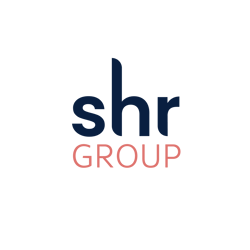The COVID-19 crisis has changed virtually every aspect of the travel industry, with marketing being no exception. As occupancies remain depressed and staffs remain furloughed, most companies have opted to reduce marketing budgets by 50% or more.
But the marketing departments that can continue to operate with fewer resources will help their companies navigate and stay afloat during these challenging times. And, by evolving their strategies to reach new, niche audiences, marketing teams can position their companies to emerge stronger.
With this in mind, SHR recently spoke with several hotel marketing leaders, who offered these three core tactics:
Rethink your metasearch strategy.
Insiders report that metasearch returns are surprisingly high for hotels currently utilizing these channels, spiking as high as double their pre-COVID levels, albeit at lower guest volumes. Still, many cautious hoteliers remain hesitant to spend a significant amount on metasearch. As the nature of online hotel marketing changes, this may prove to be an expensive mistake.
“There needs to be a change in behavior in the way we approach advertising for hotels,” says Dorian Wilson Debriano, Chief Commercial Officer at MyHotelShop. “Back in the day it was always around volume and occupancy rates, which meant going out and trying to be visible on all markets, by all types of travelers. Now we’re looking at a shift to really being able to do specific targeting, aimed at the right travelers.”
Debriano says we’ll be seeing a much more detailed and granular level of managing metasearch bidding, so that hotels can be present on their direct channels, but also be present for the right customers on metasearch, focusing on return on investment, rather than volume.
“Depending on where the travelers are coming from and what their behaviors are going to be, choose the right platforms,” he continues. “Return on investment has never been as important as it is now, with less room inventory available due to social distancing. It’s important to be present via direct channels and to get that profitability, and then on top of that, to really focus on this specific targeting, making sure you’re really getting the most dollars for every cent you put in.”
The effort counts. It really does.
Digital marketing is often a process of completing numerous tasks, on myriad channels. For streamlined hotel marketing departments operating during the COVID-19 crisis, these laundry lists of digital chores can seem never-ending. Don’t let it get you down: Getting some things done on your list is always better than getting none of them accomplished.
“Don’t get overwhelmed, because every 1% counts,” says Katie Hokin, founder and director of AccomBoost. “So if you pick one pillar of digital and you’re doing say three of the tasks out of 50 that need to be done, that’s still going to count and you’re probably doing more than the person down the road, who’s not even considering doing digital at all. Every single 1% that you do in your digital channels pays off in the long term.”
Use the downtime to your advantage.
If there’s a silver lining to the coronavirus pandemic, it’s the downtime afforded to marketers and hoteliers. It presents a rare opportunity to revisit, update and/or launch your digital presence, including your direct channels, but also your hotel’s presence on the OTAs and other third-party distributors.
“During the quiet time, get your channels sorted, thinking about the customer journey,” says Hokin. “They’re gonna find you on the OTAs, so you can’t neglect them. Everything needs to be absolutely spectacular on the OTA: your best quality content and photos.”
This philosophy also applies to search engine presence, including the crucial, yet frequently overlooked Google My Business listings that need to be managed for hotels. When users are searching for info on their shortlist of potential properties, what they see on Google can have a huge impact on their ultimate booking decision. The same is true for your own direct website, which needs to ultimately convince lookers to book there, rather than another site.
“Hotels want that direct booking, but when you get to the website, it’s not convincing people to book there,” says Hokin. “What can you do now to optimize and increase your conversions on your own website? I would really focus on website features, like book direct incentives and big, beautiful images.”
Another less-costly-yet-useful web redesign technique is to make smarter use of white space. When travelers visit your site, you want to dazzle them with imagery, rather than large chunks of text.
“Get your inspiration from the OTAs,” explains Hokin. “They use icons and they make it really easy and digestible content. You need to do the same.”
by Jason Emanis


